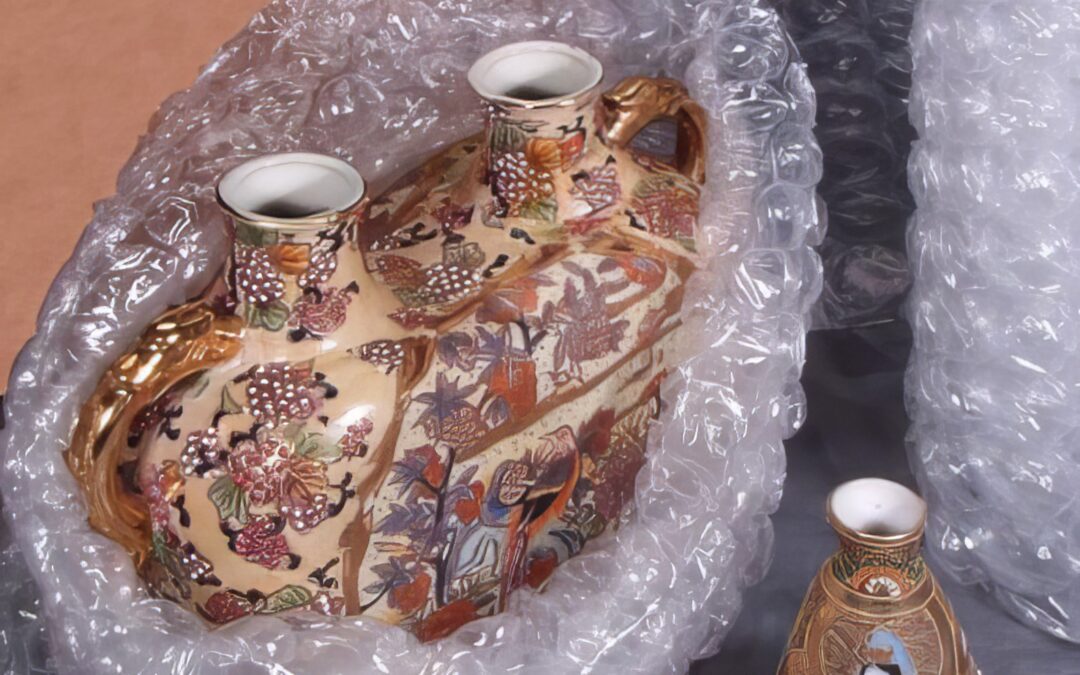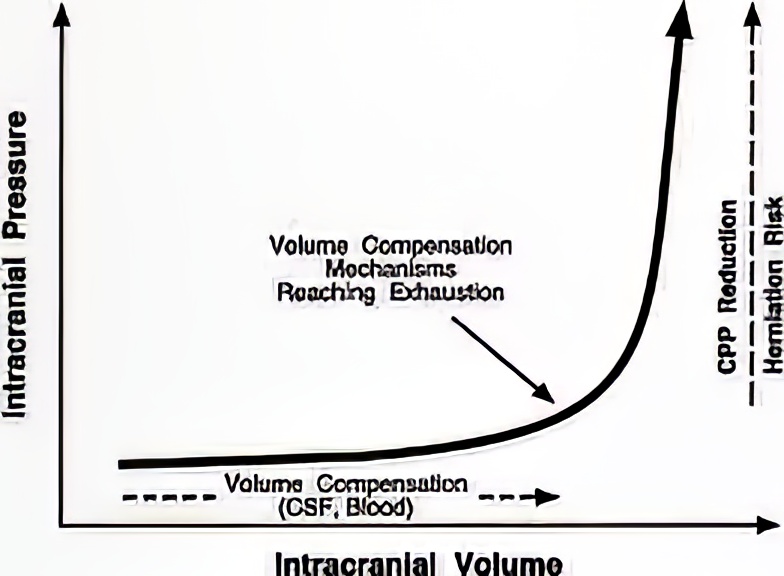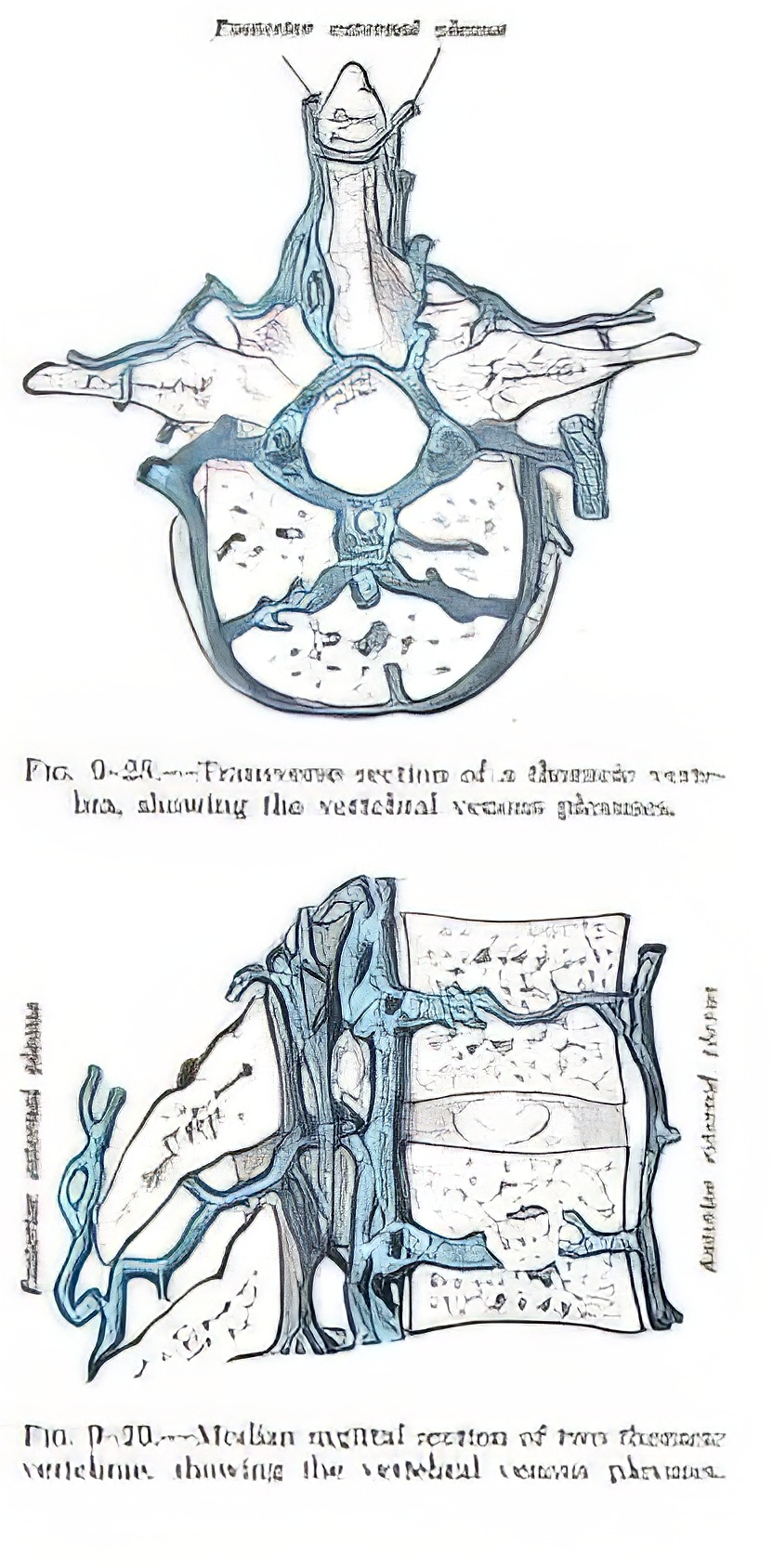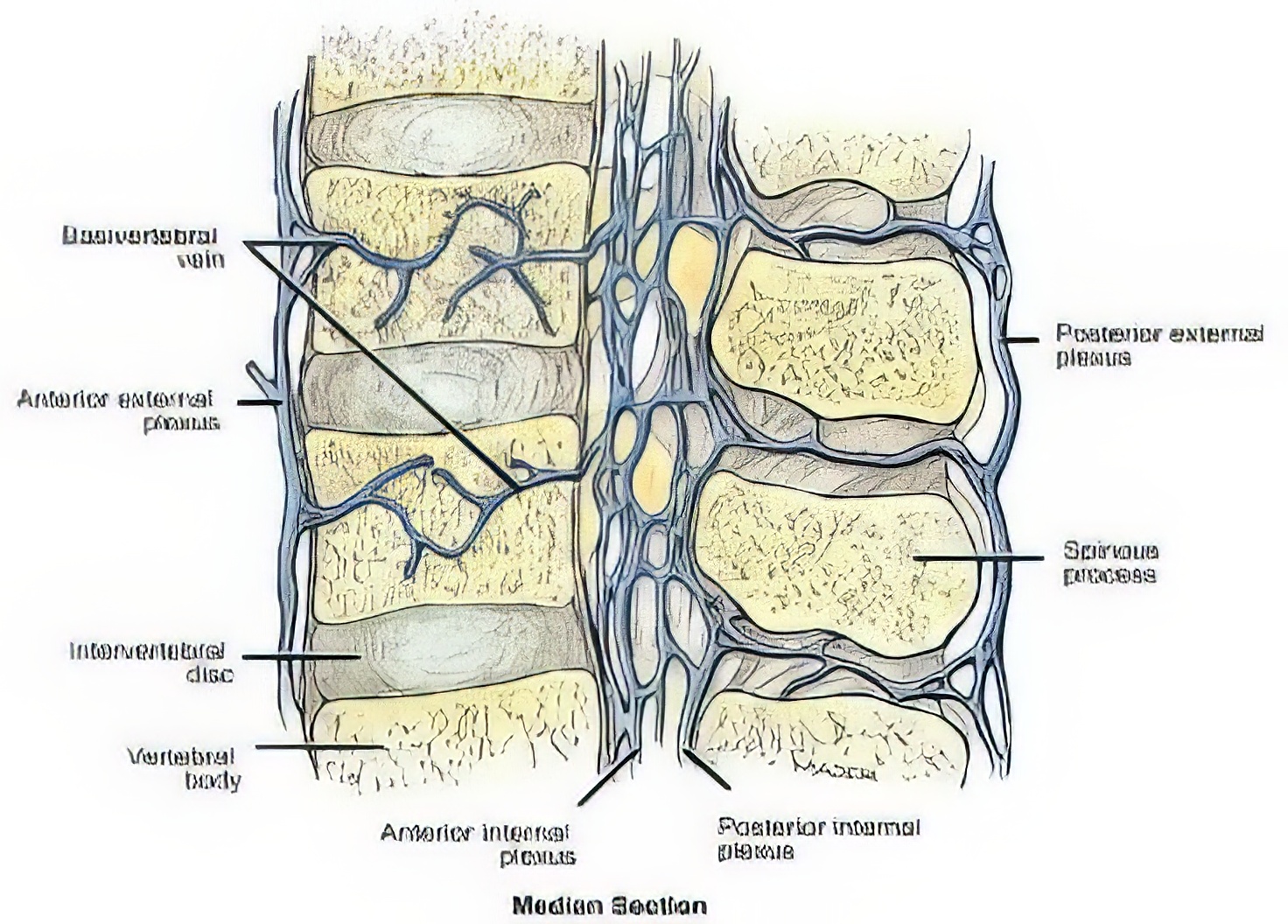Preamble: Taking up the Cranial Reserve Volume (such as with the Q-Collar™ and the SAGE Rebreather™) may afford up to a 40% reduction in traumatic Spinal Cord Injury (SCI).
There are approximately 300,000 spinal cord injuries in the United States currently with 12,000 new cases per year1 (Not including those that died during the spinal injury). Living expenses and the estimated lifetime costs directly attributable to SCI vary greatly according to severity of injury. Many estimates do not include any indirect costs such as losses in wages, fringe benefits, and productivity which average $70,575 per year in February 2013 dollars but vary substantially.
2 Very few people experience complete neurologic recovery after SCI3,4 A significant proportion of SCIs result in neurologically complete and tetraplegic deficits. Lifetime costs of managing SCI and related secondary conditions are staggering ($3M lifetime healthcare costs alone) and pose a significant burden to individuals with SCI, their families, and society.5,6 Hence, given the immense personal and financial burdens of SCI, prevention is critical.7
We know the science of how fluids behave in moving containers as SLOSH (hydrodynamics). Smith, et al, demonstrated how one might mitigate TBI by filling up the cranial space of rats during a 900 G-force impact protocol and effectively reduced TBI by 83%. They “repackaged” the cranial structures by adding volume and pressure to the brain space by way of increasing the outflow impedance of the brain through use of a jugular compression device. Similarly, instituting the SAGE Rebreather also serves to raise the intracranial and spinal volume, taking up the Cranial Reserve Volume of the cranial-spinal space. Smith, et al, also performed a large nationwide epidemiology study of high school altitude and concussion mitigation whereby they demonstrate a 30% protective effect from concussions of high school students living at altitude. The Q-Collar™ exerts exacting pressure on the omohyoid muscles which in turn gently compress the jugular veins8, which has been measured to increase intracranial volume by 3-4 cc, and intracranial pressure by approximately 30%.9 The physiology of jugular compression dates back to the 1880’s and was brought to the forefront of medicine when Dr. Queckenstedt popularized the actions of jugular compression on the battlefield when wishing to prove patency of the cranial spinal axis. The pressure exerted on the jugular veins is comparable to the amount of pressure exerted by common business neckwear.10 The resulting increase in intracranial pressure is comparable to that exerted on the cranial space when lying prone or even yawning11.
Spinal Cord Venous Anatomy:
“In brief, the vertebral veins are a valveless plexiform network with a longitudinal pattern. They parallel and communicate with the superior and inferior venae cava. The plexus extends the entire length of the vertebral column and finds a cranial terminus in the dural sinuses.” 12
_______________________________
Note: Any information regarding performance factors for the SAGE Rebreather™mask remain theoretical only. They have not yet been validated by human clinical trials to gain authorization of claims from the FDA.
SAGE Rebreather™
Vertebra cross section13
- Posterior external Plexus B. Posterior internal plexus, C. Anterior internal plexus, D. anterior external plexus, E. radicular vein, F. is ascending lumbar vein, G. basivertebral vein, H. intraosseous plexus. Spinal venous subtraction shows non-filling denoted as “C,” the internal plexus surrounds the spinal cord.
When viewing the above images of the enveloping venous plexus, one can imagine that any process that might engorge or distend these vessels would serve to repackage the cord just like bubble wrap (see image nearby) or packaging peanuts. Jugular compression was shown by Queckenstedt in 1918 to rapidly fill the compliance of the venous system, including the cranium and spinal canal. This same physiological filling ensues upon the application of the Q-Collar™ or administration of the SAGE Rebreather™.
The United Parcel Service (UPS) instructs us how best to package fragile or delicate items when shipping, “Provide Internal Protection….”
- It is essential to cushion the contents of your package correctly.
- Please be sure that you wrap each item separately.
- Fragile articles need separation from each other and from the corners, sides, top, and bottom of the box.
- Each item should be surrounded by cushioning and placed away from the box’s walls. This prevents product-against-product damage and protects contents from shock and vibration, which can pass from outside the box to the contents.
- Please use proper cushioning material, combined with a solid outer container, to protect your shipment fully. Make sure you use enough cushioning material to ensure the contents do not move when you shake the container.”14
Approximately 30 ml (21%) of a total volume of 140 ml fluid, known as Cerebrospinal fluid (CSF), resides within the spinal axis15, and about one-third of the compliance of the CSF system has been attributed to the spinal compartment.16 As evidenced by the Queckenstedt Maneuver, placement of pressure over the internal jugulars will “fill up” the compliance of the cranial and spinal axis until one reaches the plateau of the pressure-volume curve.
SHAH et al. (AUGUST 2011, boxed off below) teaches us how significant the Q-Collar™ may be in preventing spinal cord injuries when “filling up the redundant or compliance space” within the spinal axis. Their work depicts the axial loading of empty, half fluid-filled, and totally fluid-filled tin cans (cylinders), veritably a perfect spinal cord model for what is provided by the Q-Collar™. The conclusion section is paraphrased and highlighted for your convenience.
“Empty and water-filled thin metal cylindrical cans were loaded under axial compression at various speeds until the cylinder collapsed. The loading rate effect was found insignificant within the range of experimental work carried out. A numerical investigation successfully explained the damage process of the water filled cans. The following conclusions were made: Empty cylindrical shells can sustain the axial compressive loads for a minimal time, and the final cylinder collapse may be instantaneous. Compared to empty cylinders, the water-filled cylinders exhibit great stability and decelerate the arrival of final collapse, which may provide enough time to evacuate personnel in the vicinity of large liquid-carrying vessels. A 42% increase in the external load carrying capacity was found that could be attributed to the filled cylinders.”17
Certainly, the collar and the SAGE Rebreather will not prevent surgical-type transections of the cord from a penetrating knife or bullet piercing directly into the cord, however, ballistic wave energy absorption would likely be more statistically common than actual cord penetration from even a gunshot wound (cord damage from the bullet passing anywhere near the cord verses direct penetration of the bullet). Further, violence makes up only 15% of Spinal Cord Injury (SCI),18 thus we expect the vast majority of the incident cause of SCI would have at least some degree of SLOSH energy abatement on top of the 42% increased load capacity. Certainly, the model chosen to study the actual level of SCI abatement would greatly determine the degree of protection.
Based on surviving the first year after injury and living on average of 40 years, the above statistics would imply a total societal cost of SCI in the last 40 years would reach: 300,000 x $3M (lifetime healthcare costs) = $900B plus 300,000 x $70,600 (lost benefits and wages) = $21B or a total of 0.92 Trillion dollars. Further, there are 12,000 new cases each year at a cost of 12,000 x $3M = $36B in direct costs and another 12,000 x $70,600 = another $850M in lost annual wages. The author understands that not all SCI are preventable by a device when up to 28% of SCI are caused by accidental falls and thus these individuals may not be expected to place a protective device on. Given that the US spends an estimated $1B annually19 on SCI, this potential SLOSH Theory benefit warrants further investigation. If a technology could be utilized across all risk categories and did reduce SCI by 40%, then the potential savings to the United States alone would top $400,000,000 annually.
__________________________________________________________
Note: Any information regarding performance factors for the SAGE RebreatherTM mask remain theoretical only. They have not yet been validated by human clinical trials to gain authorization of claims from the FDA.
______________________________________________
1The National SCI Statistical Center 1717 6th Avenue South, SRC 515, Birmingham, AL 35233-7330,
https://www.nscisc.uab.edu/PublicDocuments/fact_figures_docs/Facts%202013.pdf
2The National SCI Statistical Center 1717 6th Avenue South, SRC 515, Birmingham, AL 35233-7330
https://www.nscisc.uab.edu/PublicDocuments/fact_figures_docs/Facts%202013.pdf
3 Marino RJ, Ditunno JF Jr, Donovan WH, Maynard F Jr. Neurologic recovery after traumatic spinal cord injury: data from the Model Spinal Cord Injury Systems. Arch Phys Med Rehabil. 1999; 80:1391-1396.
4 Fawcett JW, Curt A, Steeves JD, et al. Guidelines for the conduct of clinical trials for spinal cord injury as developed by the ICCP panel: spontaneous recovery after spinal cord injury and statistical power needed for therapeutic clinical trials. Spinal Cord. 2007; 45:190-205.
5 DeVivo MJ, Chen Y, Mennemeyer ST, Deutsch A. Costs of care following spinal cord injury. Top Spinal Cord Inj Rehabil. 2011; 16:1-9.
6 Cao Y, Chen Y, DeVivo MJ. Lifetime direct cost after spinal cord injury. Top Spinal Cord Inj Rehabil. 2011;16:10-16
7 Causes of Spinal Cord Injury, Yuying Chen, MD, PhD,1 Ying Tang, MS,2 Lawrence C. Vogel, MD,3,4 and Michael J. DeVivo, DrPH, Top Spinal Cord Inj Rehabil 2013;19(1):1–8
8 Physiologic variations of the internal jugular vein surface, the role of the omohyoid muscle, a preliminary echographic study, Surg Radiol Anat, Patra P, Gunness TK, Robert R, 1988; 10; 2; 107-12
9 Smith DW, Bailes JE, Fisher JA, Robles J, Turner RC, Mills JD: Internal jugular vein compression mitigates traumatic axonal injury in rat model by reducing intracranial slosh effect. Neurosurgery 70:740–746, 2012
10 Rafferty M, Quinn TJ, Dawson J, Walters M. Neckties and cerebrovascular reactivity in young healthy males: a pilot randomized crossover trial. Stroke Res Treat 2010; 2011:692595; Effect of a Tight Necktie on Intraocular Pressure. Teng C, Gurses-Ozden R, Liebmann JM, et al. Br J Ophthalmol 2003;87:946–8
11 A Cinemyelographic Study of Cerebrospinal fluid Dynamics, Amer J of Roent, GILLAND et al. 106 (2): 369. (1969).
12 THE FUNCTION OF THE VERTEBRAL VEINS AND THEIR ROLE IN THE SPREAD OF METASTASES* OSCAR V. BATSON, Annals of Surgery July, 1940
13 Section of Rheumatology & Rehabilitation, Vertebral Venography in Disc Disorders, by B E W Mace FRCP Volume 69 June 1976,
14 http://www.ups.com/content/us/en/resources/ship/packaging/guidelines/how_to2.html
15 Davson H and Segal MB. Physiology of the CSF and Blood-Brain Barriers. Boca Raton, FL: CRC, 1996, p. 489–523
16 Marmarou A, Shulman K, and LaMorgese J. Compartmental analysis of compliance and outflow resistance of the cerebrospinal fluid system. J Neurosurg 43: 523–534, 1975
17 LOAD CARRYING CAPABILITY OF LIQUID FILLED CYLINDRICAL SHELL STRUCTURES UNDER AXIAL COMPRESSION, QASIM H. SHAH, MOHAMMAD MUJAHID, MUSHTAK AL-ATABI, YOUSIF A. ABAKR, Journal of Engineering Science and Technology Vol. 6, No. 4 (2011) 506 – 519 http://jestec.taylors.edu.my/Vol%206%20Issue%204%20August%2011/Vol_6_4_506_519_MUSHTAK.pdf
18 Spinal Cord Injury Facts and Figures at a Glance http://www.miamiproject.miami.edu/Document.Doc?id=197 19 Spinal Cord Injury Facts and Figures at a Glance http://www.miamiproject.miami.edu/Document.Doc?id=197








